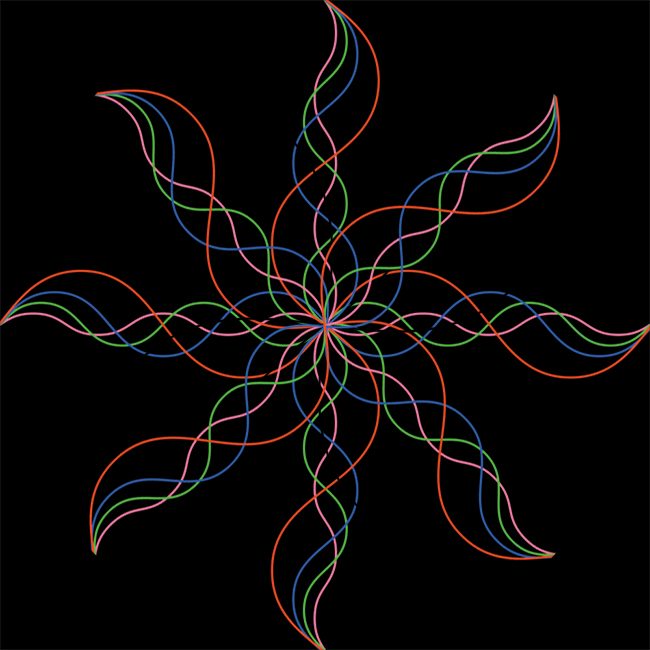In the intricate realm of music production, achieving a pristine mix and master is an art form that demands attention to detail and a deep understanding of sound. One often-underutilized yet powerful technique to enhance the sonic richness of your tracks involves manipulating harmonics, especially when it comes to EQing bass and synth sounds. In this article, we'll delve into the fascinating world of harmonics, exploring how a nuanced approach to EQing can unlock a new dimension of clarity and depth in your mixes and masters.
Understanding the Power of Harmonics
Before we dive into the technicalities of EQing bass and synth sounds, let's take a moment to appreciate the significance of harmonics in the audio spectrum. Harmonics are multiples of the fundamental frequency of a sound, and they play a pivotal role in shaping the timbre and character of a musical element. In the context of EQing, harmonics can be harnessed to add warmth, brilliance, and definition to your bass and synth sounds.

Harmonics are incredibly important in your shaping your mix, as well as the tone of your track.
The Art of Bass EQing
1. Identifying Fundamental Frequencies
A fundamental aspect of effective bass EQing is identifying the fundamental frequencies of your bass elements. This involves pinpointing the root note or notes that define the foundation of your track. Once identified, you can tailor your EQ adjustments to enhance these fundamental frequencies, ensuring a solid and well-defined low end.
2. Boosting Harmonics for Presence
While focusing on the fundamental frequencies is crucial, boosting specific harmonics can add character and presence to your bass sounds. Experiment with gentle boosts in the harmonic range to discover the sweet spots that complement the overall tonality of your track. This technique not only reinforces the fundamental frequencies but also introduces harmonically rich overtones that contribute to a more vibrant and textured bass.
3. Subtractive EQ for Clarity
Contrary to popular belief, EQing isn't always about boosting frequencies. Subtractive EQing, where you attenuate specific frequencies, is equally important. Use this technique to eliminate unwanted rumble or muddiness in the bass range, providing a cleaner foundation for the harmonics to shine through. Precision in subtractive EQing ensures that you retain the power of the low end while sculpting a well-defined and articulate bass presence.
Elevating Synth Sounds with Harmonic Precision
1. Balancing Frequencies
Synth sounds, especially in electronic music genres, often encompass a broad frequency spectrum. To achieve a harmonically rich and balanced synth mix, start by identifying the fundamental frequencies of each synth element. This step allows you to create a harmonic relationship between different synth layers, preventing frequency clashes and ensuring each element occupies its sonic space without masking others.
2. Creating Harmonic Stacks
Take advantage of synth harmonics by layering multiple instances of the same or similar synth sounds at different octaves. This creates harmonic stacks, where the harmonics of each layer reinforce and enrich one another. Carefully EQing each layer to emphasize specific harmonics or frequency ranges can result in a synth sound that is not only powerful but also harmonically complex and sonically captivating.

You can control harmonics more precisely by creating octaved stacks of the same sound, then EQing each one for its specific purpose.
3. Dynamic EQing for Expressiveness
Harness the expressive potential of your synth sounds by incorporating dynamic EQing. This technique involves dynamically adjusting the EQ settings based on the input signal's amplitude. For example, during intense sections of your track, you might boost certain harmonics to add excitement, while during quieter passages, you could tame them to maintain a more subdued vibe. Dynamic EQing ensures that your synth elements evolve with the dynamics of the music, adding a layer of sophistication to your sonic palette.
Putting It All Together
1. Balancing Act
Achieving an optimal mix and master involves striking a delicate balance between the bass and synth elements. Ensure that the harmonics introduced in the bass frequencies complement rather than overpower the harmonic intricacies of your synth sounds. Balancing these elements requires a keen ear and a nuanced understanding of how harmonics interact within the context of your track.
2. Reference and Iteration
Constantly reference your mix against well-mastered tracks in similar genres. Pay attention to how the harmonics are handled in professional productions and use this as a benchmark for your own work. The process of refining your mix and master is iterative, so don't hesitate to make adjustments and revisit your EQ settings as your project evolves.
3. Automation for Dynamic Impact
Embrace automation to add dynamic impact to your mix. Automating EQ parameters, especially those related to harmonics, allows you to sculpt the frequency profile of your track over time. Create subtle sweeps, boosts, or cuts in harmonically rich sections to guide the listener through a sonic journey that is both engaging and emotionally resonant.

Automation allows you to shape your harmonics appropriately at one part of a track, then modify them when the musical context has changed later in a track.
Conclusion
In the realm of music production, understanding and harnessing the power of harmonics can be a game-changer for both aspiring and seasoned producers. By intricately EQing bass and synth sounds to enhance harmonics, you not only refine the sonic quality of your tracks but also infuse them with a unique and compelling character.
As you embark on your harmonic exploration, remember that there are no strict rules—only guidelines. Trust your ears, embrace experimentation, and allow the harmonic intricacies to shape a sonic landscape that captivates and resonates with your audience. In the end, it's the harmonics that elevate your mix and master from the ordinary to the extraordinary, creating a musical experience that transcends the boundaries of conventional production.

